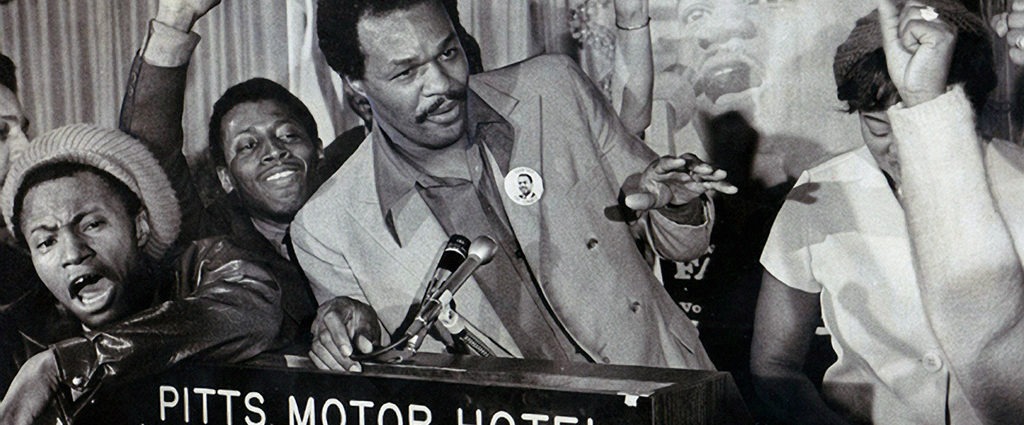THE PEOPLE AND THE POLICE (1971) FEAT. MARION BARRY

Just months after the 1968 assassination of Martin Luther King, Jr. and the riots that devastated Washington, D.C., the Office of Economic Opportunity (OEO) introduced a program intended to bring the city together.
OEO created The Pilot District Project, established in the Third District, to foster the development of community programs and improve the shattered relationship between the city’s citizens and its police force. As part of the ambitious project, the government agency contracted with Guggenheim Productions to produce a documentary and a series of training films that could be used when they rolled the program out to other cities around the country. Although OEO spent $197,879 to make the films, they were never released.

“The question always comes when you live in a community that’s oppressed and people are living like we have to live in the black community, how do you get a handle on all these problems? And you solve them by trying to create in the citizens an awareness of a need for dramatic and drastic change in this community.”
-Marion Barry Development of Community Control, 1971

The Office of Economic Opportunity was the agency created to stand up poverty-reducing programs sketched out in the Economic Opportunity Act of 1964, a major component of President Lyndon Baines Johnson’s War on Poverty. Although the agency was broken up and dissolved by the 1980s, many of the programs it started are still in existence fifty years later. Head Start, the VISTA volunteer program, and Job Corps are a handful of the most successful. The Economic Opportunity Act also established Community Action Programs that gave the keys to change to community members, ostensibly with the belief that empowering citizens would be the most efficient way to bring about real change. A string of riots in American cities in the late 1960s exposed a deeply dysfunctional relationship between urban communities and the police: reports showed antagonism, prejudice and brutality from the police, and hostility, distrust, and contempt from the community.[2] OEO created the Pilot District Project to address this major problem.
These are the barest facts of the Pilot District Project and the films that we’re featuring in today’s post. The fact that the Office of Economic Opportunity was willing to plunk down what today would be over one million dollars for films that no one ever saw is remarkable, and not just because that’s an awful lot of money a product that was almost immediately warehoused in Suitland, Maryland.
That kind of investment shows that OEO believed they were undertaking a project that would transform police-community relations, one that would serve as a model for the rest of the country. Officials may have been overly optimistic, and the film project was certainly held up as an example of government waste at the time, but what’s easier to see in hindsight is that CG 8225: The People and the Police is an exceptionally well-crafted film that serves as a record of the Washington, D.C. community and the turmoil it was experiencing in the late 1960s. OEO may not have gotten what they wanted from the program or the film production, but more than forty years later, we all can benefit from this $200,000 mistake.
The People and the Police, Forty-Seven Years Later
Looking through the National Archives’ file, it is clear that the OEO was trying to rid itself of the film project almost as soon as it was completed. The final date cited in the film is April 15, 1971. By December of that year, correspondence shows OEO had already begun to initiate transfer of the films and 53 boxes of associated material. Usually the Archives doesn’t receive records until decades after an agency creates them.
Today, we can be grateful that the OEO sent the films to the National Archives rather than stick them in a closet and try to forget about them. CG 8225: The People and the Police, along with its three short companion films, are valuable historical records of a specific time and place in American history that we can’t help but connect to the present. Washington, D.C. is not Ferguson, Missouri, and 1968 is not 2015, but these films are an example of how we can look to the past to find out not just what happened, but to recognize issues that nearly fifty years later, our nation still struggles to confront. VIA:
